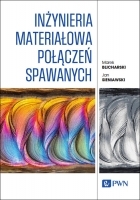Skanowanie 3D jako narzędzie do projektowania kasków korekcyjnych
3D scanning as tool for design of correction helmets
Mechanik nr 02/2015 - Artykuły z Międzynarodowego Kongresu CAx Innovation zamieszczone na płycie CD
STRESZCZENIE: Wady kształtu głowy u dzieci występują o koło 3% populacji. W artykule zaproponowano sposób leczenia plagiocefalii ułożeniowej za pomocą indywidualnie projektowanych kasków korekcyjnych. Omówiono kolejne etapy projektowania i produkcji kasków. Dodatkowo przedstawiono sposób diagnozowania deformacji kształtu z wykorzystaniem skanera 3D. Przeprowadzono również analizę antropometryczną oraz analizy porównawcze dostarczające informacji o wzroście głowy.
SŁOWA KLUCZOWE: skanowanie 3D, wady kształtu głowy, kraniosynostoza, kaski korekcyjne.
ABSTRACT: Deformities of head shape in children occur in about 3% of the population. This paper proposes a method of treatment of positional plagiocephaly of using a custom-designed helmets correction. The steps of the design and manufacture of correction helmets are presented. In addition, methods of diagnosing head shape deformation using the 3D scanner are shown. This research shows also anthropometric analysis and comparative analyses, which provides information about the growth of the head.
KEYWORDS: 3D scanning, head shape deformities, craniosynostosis, correction helmets.
BIBLIOGRAFIA / BIBLIOGRAPHY:
- Blecher Ch. "Nicht nur Ästhetik! Kopfdeformitätenbei Kindern", Face(30-33), 1/2009.
- D'Apuzzo N, Mitchel,l H., "Advances in Photogrammetry, Remote Sensing and Spatial Information", rozdział 31. Medical application, ISPRS Congress Book – Li, Chen & Baltsavias, Sciences:2008.
- Hutchison B.L, Stewart A. W.,2 Mitchell E. A., "Deformational plagiocephaly: a followup of headshape, parental concern and neurodevelopment at ages 3 and 4 years", Archives of disease in childhood 96,2011,str 85–90
- Larysz D., Larysz P., Filipek J., Wolański W., Gzik M., Kawlewska E.: "Morphometric analysis of the skull shape in children with hydrocephalus". Computational vision and medical image processing IV. Proceedings of VIPIMAGE 2013 - IV ECCOMAS, Funchal, Portugal 2013, str. 337-340.
- Lipura A.B. Gordon S. Darvonn T.A. Van Pelt A.E., "Helmet Versus Active Repositioning for Plagiocephaly: A Three-Dimensional Analysis", Prediatrics 2010, str. 936-945.
- Speltz M.L. Case-Control Study of Neurodevelopment in Deformational Plagiocephaly, Pediatrics Vol. 125 No. 3 March 1, 2010.
- Stachowiak E., Gzik M., Wolański W., Larysz D.: "Nieinwazyjna metoda korekcji wad kształtu głowy u dzieci". Postępy inżynierii biomedycznej. Red. Lucyna Leniowska, Zbigniew Nawrat, Rzeszów 2013, str. 149-156.
- Tejszerska D., Wolański W., Larysz D., Gzik M. Kawlewska E. "Morphological analysis of the skull shape in craniosynostosis", Acta Bioengineering Biomechanics. vol. 13 no. 2011, str. 35-40.
- Wolański W., Larysz D., Gzik M., Kawlewska E. "Modeling and biomechanical analysis of craniosynostosis correction with the use of finite element method", International Journal for Numerical Method in Biomedical Engineering, 2013, str. 916-925.
- www.cranioform.de
- www.cranialtech.com




















